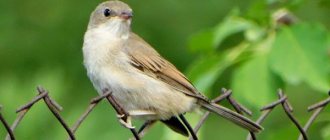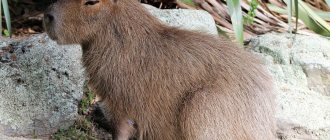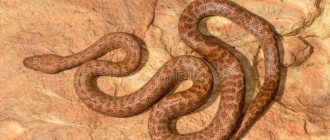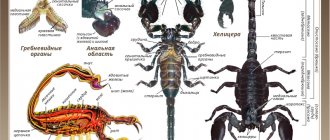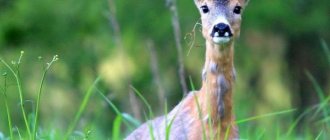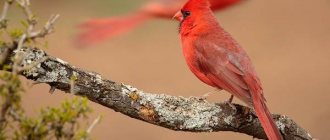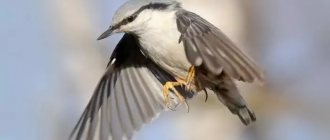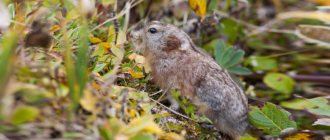Origin of the species and description
Photo: Cross spider
Cross spiders are representatives of the order of spiders, suborder of araneomorphic spiders, family Araneidae, genus of cross spiders.
To date, scientists can only approximately indicate the period of appearance of ancient arthropods. The chitinous shell of these representatives of flora and fauna disintegrates quite quickly, leaving virtually no traces. A few remains of ancient arthropods were discovered in pieces of frozen resin, or in amber. Today, zoologists call the approximate period of the appearance of arachnids - 200-230 million years ago. The first spiders had very small body sizes, which did not exceed half a centimeter.
Video: Cross spider
Their body structure was also significantly different from modern ones. Spiders of that time had a tail, which was intended for making strong web threads. The so-called web was used to line their burrows, or shelters, and also to protect the clutch of eggs from damage and extinction. During the process of evolution, the tail part of ancient arthropods disappeared. However, the modern spinning machine they have now did not appear immediately.
The first spiders supposedly appeared on Gondwana. Then they very quickly spread across almost the entire landmass. Subsequent ice ages significantly narrowed the regions of their residence. Arthropods are characterized by a fairly rapid evolution, during which spiders changed in appearance depending on the region they lived in, as well as on belonging to a particular species.
Appearance and features
Photo: Large cross spider
Like other representatives of arachnids, the body of the cross is divided into two segments: the cephalothorax and abdomen. In addition, they have arachnoid warts and a walking apparatus, the latter being represented by the femur, knee joint, tibia, forearms, tarsi and claw. Spiders also have chelicerae and pedipalps.
Crosses have fairly small body sizes. Representatives of this species have pronounced sexual dimorphism - males are significantly inferior to females in body size. The average body length of a female individual is 2.0-4.5 cm, and that of a male individual is 1.0-1.2 cm.
The body of the arthropod is covered with a sand-colored chitinous shell, which insects typically shed during the molting period.
Spiders have 12 limbs:
- one pair of chelicerae, the main purpose of which is to fix and kill caught prey. This pair of legs points downwards;
- four pairs of walking limbs that have claws at the tips;
- one pair of pedipalps, which are designed for fixing their prey. It is noteworthy that on the last segment of these limbs in males there is a reservoir into which seminal fluid enters, which is subsequently transferred to the spermatheca of the female.
Crosses have as many as four pairs of eyes, but they are poorly developed. The vision of these representatives of arthropods is poorly developed; they can only distinguish silhouettes and general outlines. The reference point in the surrounding space is the sense of touch. This function is performed by hairs that cover almost the entire body.
Interesting fact: Spiders have a huge variety of hairs of different types on their bodies. Each type is responsible for receiving certain types of information: light, sound, movement, etc.
The abdomen of the cross has a round shape. It is missing any segments. On the upper surface there is a clearly defined pattern in the form of a cross. In its lower part there are three pairs of special arachnoid warts. It is into these warts that thousands of glands open, which produce strong, reliable arachnoid threads.
The respiratory system is located in the abdomen and is represented by two pulmonary sacs and a tracheal tube. The heart is located in the back area. It has the shape of a tube and vessels branching from it.
Where does the cross spider live?
Photo: Cross spider in Russia
Spiders of this species are characterized by a ubiquitous distribution. They live in almost every country in Eurasia. Also quite common in North America.
Crosses prefer areas with high humidity, little sunlight and high air temperatures. Spiders love to mingle on the edges of forests, meadows, gardens, and fields. Human housing is no exception. Once in living spaces, spiders climb into crevices or joints between walls, inaccessible places, spaces between furniture and walls, etc. Crossworts can often be found on various types of vegetation located near a body of water.
Geographical regions:
- territory of almost all of Europe;
- Russia;
- Africa;
- Asian countries;
- North America.
Spiders prefer to settle in places where it is easy and convenient to weave their fishing nets, which are likely to catch a sufficient number of insects. In Russia, crosses are often found in city parks and squares.
Now you know where the cross spider lives. Let's see what he eats.
Is it dangerous for humans?
Few people like Araneus. Naturally, many are interested in whether cross spiders are dangerous for humans. Arachnids produce poison with which they kill their prey. The arthropod bites a fly, beetle or mosquito and releases a toxic substance through the wound. Its concentration is enough to kill the prey. The spider can also bite if it senses danger.
The spider cannot bite a person - its jaws are too weak. Human skin is too thick. If there is a wound on the skin and a toxic substance gets into it, the consequences will not be more severe than from a mosquito.
What does the cross spider eat?
Photo: Cross spider in nature
The cross is far from a harmless representative of arthropods. It belongs to the poisonous species of arachnids, and by nature is considered a hunter. It goes hunting most often at night.
What is the food source:
- flies;
- mosquitoes;
- butterflies;
- vile;
- aphid.
When going hunting, the cross is located in the central part of the web and freezes. If you observe him during this period of time, he appears to be dead. However, if the prey gets caught in the net, the spider plunges its front pair of limbs into it with lightning speed, injecting poison. After a short period of time, the potential food stops resisting. Crossbills can eat it right away or leave it for later.
These representatives of arachnids are considered voracious. To be satisfied, they need an amount of food per day that exceeds their own body weight. For this reason, spiders spend most of the day hunting. They rest mostly during the day. Even during the rest period, the signal thread is always tied to one of the limbs of the cross.
Interesting fact: The cross spider does not eat everyone who falls into its trapping nets. If a poisonous insect, or one that emits an unpleasant odor, or a huge insect gets caught in them, the spider simply bites through the fixing threads and lets it go.
Arthropods have an external type of digestive tract. They cannot digest food on their own. They tend to partially digest it with the help of injected poison. Only after the insides of the caught insect turn into a liquid substance under the influence of the toxin do the spiders drink it. Also, spiders often, after paralyzing the victim, wrap it in a cocoon of their web. The process of partial digestion also occurs in it.
Black widow, false black widow
It is the most poisonous creature on earth. Black widows belong to the karakurt family.
The false black widow is slightly different in appearance and its venom is not as strong. Provokes allergies.
The appearance is memorable - long black legs, cephalothorax, abdomen with a glossy sheen. On the lower part there is a characteristic red hourglass pattern; in false black widows it is pink, white and brown.
Poisonous spiders also include wolves, cross spiders, and hermits. They bite hard, but not fatally. In most cases, the consequences are limited to an allergic reaction.
Features of character and lifestyle
Photo: Common cross spider
Spiders are nocturnal arthropods, which tend to be most active at night. They spend most of their time hunting and have little rest. As habitats, be sure to choose places where there is a lot of moisture and little sunlight.
Webs are often woven between the branches of bushes, trees, various types of vegetation, blades of grass, etc. They themselves settle down in a secluded place near their fishing net. The web threads that crosses can weave have great strength and are capable of holding even fairly large insects, whose dimensions are several times larger than the size of the body of the spider itself.
Crossers are considered real hard workers, as they tirelessly weave their web. They tend to weave huge webs. Once they become unsuitable for catching prey, they scatter it and weave new nets.
Interesting fact: The spider will never get entangled in its own trapping nets, since it always moves strictly along a certain trajectory of non-sticky areas.
Spiders also weave webs mainly at night. This is due to the fact that the main enemies of crosses are diurnal and hunt them during daylight hours. In the process of forming a trapping network, spiders show accuracy, detail and scrupulousness. In the process of their life, they rely not on vision, but on touch. Krestovik lead an exclusively solitary lifestyle.
Social structure and reproduction
Photo: Cross spider
Throughout the spring and summer, males are busy forming webs and ensuring a sufficient amount of food. During the mating season, males leave their shelters and begin to actively look for a female to mate with. During this period, they eat practically nothing, which explains such a significant difference between male and female individuals.
Crossworts are dioecious arthropods. The period of mating relations and courtship of females often occurs at night. It consists of males performing peculiar dances that involve tapping their limbs. After the male manages to reach the head of the female with his limbs, the transfer of seminal fluid occurs. After mating, most males die from the poisonous secretion of the female.
The period of marriage occurs at the end of the summer season, the beginning of autumn. The female makes a cocoon from the web in which she places her eggs. One cocoon can contain from 3 to 7 hundred honey-colored eggs. At first, the female wears this cocoon on herself, then finds a secluded place and hides it. The cocoon reliably hides future offspring from rain, wind and cold. In the spring, spiderlings begin to emerge from the eggs. They stay inside the cocoon for a short period of time, then come out of it and crawl away in different directions. Little crosses immediately become independent and lead an isolated lifestyle.
After the spiderlings leave the cocoon, they try to separate as quickly as possible. Due to high competition and the possibility of becoming food for older individuals, such a step will significantly increase the chance of survival.
Interesting fact: Due to the fact that newly born young individuals have rather small and weak limbs, in order to separate from each other they use a web, on which they can fly up to several hundred kilometers, provided there is wind.
Crosses adapt well to new conditions. It is because of this that lovers of exotic flora and fauna often keep them as pets. To maintain them, a terrarium of sufficient size is used to provide space for a fairly large web.
Precautionary measures
Even if the bite is not fatal, it can cause a lot of trouble.
To avoid this you need to follow some rules:
- When spending the night in nature, you have to sleep in a tent, so before spending the night, check the fabric room for an invasion of “eight-legged guests.”
- Before putting on clothes and shoes, check for spiders inside. The same applies to bedding.
- If you find a web, it is better not to contact it, since only “evil” female crosses weave webs.
- If there is a spider in front of you, you should not run away; it is better not to do anything at all and protect small children from it.
Sources
- https://ykys.ru/ukus-pauka-krestovika/
- https://domvred.ru/pauk-krestovik/
- https://usatym.net/prochie/pauk-krestovik-opisanie-stroenie-gde-obitaet-pitanie/
- https://WikiParazit.ru/pauki/pauk-krestovik.html
- https://BaikalHangkai.ru/koshki/dyhanie-pauka-krestovika.html
- https://dezplan.ru/vopros/pauk-krestonosec
- https://givotniymir.ru/pauk-krestovik-obraz-zhizni-i-sreda-obitaniya-pauka-krestovika/
- https://beetlestop.ru/pauk-krestovik/
- https://prusakam.net/pauk-krestovik/
- https://halal-eko.ru/rybki/stroenie-pauka-krestovika.html
- https://bioros.net/nasekomye/kak-raspoznat-pauka-krestovika-i-naskol-ko-on-opasen.html
- https://nashzelenyimir.ru/%D0%BF%D0%B0%D1%83%D0%BA-%D0%BA%D1%80%D0%B5%D1%81%D1%82%D0%BE% D0%B2%D0%B8%D0%BA/
- https://beetlestop.ru/pauk-s-krestom-na-spine/
- https://parazitdoma.ru/drugie-parazity/pauk-krestovik
- https://kopejsk.ru/opisanie/opasen-li-dlya-cheloveka-pauk-krestovik.html
[collapse]
Natural enemies of cross spiders
Photo: Female cross spider
Despite the fact that the crusader is classified as a dangerous, poisonous spider, it also has enemies. It is in order to reduce the likelihood of being eaten that they are most active at night. The main enemies of this type of arthropod can be called birds, as well as insects - parasites. Some species and flies wait until the spider freezes on its web in anticipation of its next victim, fly up to it and instantly lay eggs on its body.
Subsequently, parasitic larvae emerge from them, which, in fact, feed on the insides of the spider. When the number of parasites increases, they practically eat the spider alive. Crusaders are small in size, which often leads to them themselves becoming prey to other, larger arachnids. Some amphibians, such as lizards or toads, can also be considered enemies of the crusaders.
The main enemies of the cross spider in natural conditions:
- salamanders;
- geckos;
- iguanas;
- frogs;
- hedgehogs;
- the bats;
- ants.
Man is not the spider's enemy. Rather, crusaders in some cases can cause harm to human health. It is unusual for them to attack first. When meeting a person, these representatives of arthropods rush to hide. However, if they sense danger, they attack. A healthy adult will not die as a result of a bite, however, they will definitely feel discomfort and a change in their general well-being.
The consequence of a cross bite is pain, dizziness, nausea, vomiting, swelling, and suppuration of the bite site. Most often, all of the above symptoms disappear without drug treatment.
Poisonous or not crusader
The poison is toxic to invertebrates and vertebrates. It has an effect on the body of rats, mice, humans, and rabbits. Sheep, horses, guinea pigs, and dogs are resistant to poison. For insects and invertebrates, a crusader attack is fatal. Animals experience temporary deterioration in well-being and external irritation.
The Crusader is not dangerous to humans. When it sees people, the spider tries to hide unnoticed. However, if there is a threat to its own life, it can bite. There are 2 small spots left on the body. Initially there is pain and burning. The next day, suppuration occurs. In people with weakened immune systems and children, after a spider bite, their general health worsens. Weakness, nausea, headache, dizziness, and abdominal discomfort appear. The condition returns to normal in a few days.


